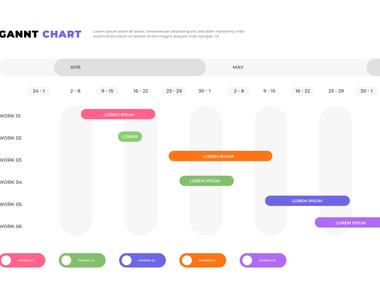Table Of Contents

Introduction
Marketing is one of the most critical parts of any business strategy that determine the business’s success or failure. You may come up with an excellent product or service, but if you aren’t able to market it well, it will turn out to be a dud. While that statement is true, it often leads people to fall for this popular misconception that marketing is only about communication and advertising. While in reality, marketing is as vast a domain and as important a function as any other. There are various aspects one has to consider while charting out the marketing plan for a business. It is not just about which customers to target, how to target, what messaging and channels to use and so on, but also about the product or service itself, the place where you choose to market, the price you choose to sell it at, and the promotional activities you undertake to market your product or service. This framework is at the heart of any good marketing plan, and is also popularly known as the 4P framework. We shall discuss it too along with other aspects of what constitutes a great marketing plan in this article.
Give me six hours to chop down a tree and I’ll spend the first four sharpening my axe
— Abraham Lincoln
The above quote shows the importance of planning well, and being prepared for the task at hand, rather than going about the job in an unplanned manner and regretting it later. Your marketing plan should be the reference document to be used as the basis to execute your marketing strategy. It should set out clear objectives and crisp explanation of the ways you will achieve them. One must also remember however, that marketing in itself will not guarantee sales, but by adopting a well-researched and coherent plan, you increase your chances of success manifolds.
How and Where to Begin?
The starting point for any marketing plan should be a crisp executive summary that touches upon every topic of the plan. But you must not start writing the summary beforehand. In fact, you should keep the executive summary to be written towards the very end.
The first thing then that you should start with, is a clear statement of intent, which is derived from the nature of the business. In other words, “what is it that you want to achieve for the business?” Which comes only once you answer for yourself the preceding question – “What is my business all about?”. Therefore, you should include the following in your statement of intent in that order:
- Business Mission (What the business is about)
- Key Business Objectives (What you intend to achieve)
- Business Strategy (How you intend to achieve what you have set out to achieve)
This will ensure that your marketing strategy and marketing plan will work in sync with your overall business strategy and overall vision for your business, which is critical.
The next thing you must do very thoroughly, is an objective assessment of the external and internal factors that decide the success or failure of your business. This includes an analysis of the environment your business operates in, and also your own SWOT analysis. Both are equally important for you to get a firm grip on your starting point, your environment, your strengths, weaknesses, constraints etc. The STEEPLE framework helps you understand the main opportunities and threats in the environment you operate in.
- Social factors such as changing attitudes and lifestyles, the culture etc
- Technological factors such as new materials and growing use of the Internet
- Economic factors such as inflation, interest rates, exchange rates and consumer confidence
- Environmental factors such as changing expectations of customers, regulators and employees on sustainable development
- Political factors such as changes to taxation, trading relationships or grant support for businesses
- Legal factors such as changes to employment law, or to the way your sector is regulated
- Ethical factors such as ethical and moral standards governing policies and practices
In addition to this, you also need to do a SWOT analysis, to analyse your own strengths, weaknesses, unique opportunities that present themselves, and the threat posed by internal and external factors. Next step for you would be to list down your marketing objectives.
Listing Down Your Marketing Objectives
Formulating your marketing objectives should be done only once you have figured out your operating environment, and done your SWOT analysis. Only then can you expect your objectives to be grounded in reality. Your marketing objectives should also be in sync with your business objectives.
Your marketing objectives should always be SMART:
- Specific – Avoid setting vague targets for yourself. It never works in reality.
- Measurable – What you can’t measure, you certainly can’t improve. Its really that simple. Whatever your objective is, you need to be able to check whether you have reached it or not when you review your plan.
- Achievable – You need to have a realistic assessment of the available resources at your disposal and the set your goals accordingly. Typically, people and access to funds are the two main resources that you need to plan for.
- Realistic – Be realistic. Don’t set yourself up for an impending failure that will leave your entire team demotivated, over-worked or frustrated at the end of each planned phase.
- Time-bound – You should set a deadline for achieving your objective. For example, you might aim to get ten new customers within the next 12 months. It is generally said that the work schedule stretches itself to the timeline you set. Don’t make the mistake of being generous or too ambitious. Balance is key.
Segmentation, Targeting and Positioning – The Crux of Your Plan
This is one framework that you can’t take as optional. If you want your business to do good, you have to be extremely good at knowing how to do segmentation, targeting and positioning for your product or service. Essentially, the concept is nothing but knowing who to market your product to. There is no product or service that is useful or valuable to the entire population on the planet. Let alone the planet, even within one neighbourhood, each household may have a different paying capacity, perception of value of your product, intent to buy, and so on. One typically breaks down the market into different segments that are based on one or more criteria. For example household / individual income levels could be a criterion. Another could be age, yet another could be education or literacy levels. You could choose to use a combination of more than one criteria to slice and dice the entire market in a manner that makes most sense to you. Once you have a good segmentation criteria and have identified different segments that you could potentially target, you list out the ones that you really think should be targeted. Thereafter, the last component of this framework is just as important as the first two – Positioning. Positioning in very simple terms means how you want your product to be perceived by your target audience. What are the values or features of the product you want to focus on, that resonates best with your target audience. To take an example from the aviation sector, one airline may want to position itself as being on time every single time (of course if it can deliver on that promise), while another airline may choose to highlight luxury and premiumness. In fact, both can do great business and resonate well with their own target audiences. Its perfectly possible. But you must know your target audience beforehand.
The Importance of the 4P Framework

If you are a marketer, you must have come across this framework. It sets a guideline for you to formulate your marketing strategy around. The 4 Ps of marketing are
- Product – This is at the very heart of your marketing. A good product is a must before you even think of marketing it to your target segment. No amount of promotion will ever work if the product is not good.
- Price – What price you choose to sell your product (or service) at, is an important consideration to make. It should take into account competitor pricing, market concentration, customer perceived value of your product and your desired profitability. Each of these is important.
- Place – Where you choose to launch and promote your offerings is also an important point to consider. You will always find a limited edition, luxury watch brand selling their products in an upmarket location, or in a strategically well-lit, uber-luxurious store. Think about why they choose to do so.
- Promotion – Just as it is true that a bad product wont fly despite good promotion, so it is for a great product with a sub-par promotional strategy. Promotion strategy should include your objective (increasing brand awareness / generating leads / increasing sales could be some of the objectives), clear outline of the content of your messaging (how you want to position your product), channel of communication you choose (physical trade-shows, television, print, digital etc), your target audience etc.
There are additional 3 Ps that are considered these days in addition to the above 4.
- People - for example, you need to ensure that your employees have the right training.
- Processes - the right processes will ensure that you offer a consistent service that suits your customers.
- Physical evidence - the appearance of your employees and premises can affect how customers see your business. Even the quality of paperwork, such as invoices, makes a difference.
Summary
In essence, creating a marketing plan for your business is critical to the success of your business. One must start by defining their business mission, followed by the business objectives, and then chart out a plan to be able to achieve those objectives. Creating your marketing plan also requires a deep understanding of the overall environment that the business is operating in, in addition to the strengths and weaknesses of the business / marketing team, as well as the unique opportunities and threats that the business may face. The STP framework – Segmentation, Targeting and Positioning forms the fundamental basis for any marketing plan, that tells you whom to target. While pricing, promotion and place you choose to promote and sell may be important, your actual product is the very core of your marketing strategy. An average or bad product can never fly even with the best of marketing strategies in place and despite having the best execution team.
Related Posts
Quick Links
Legal Stuff








